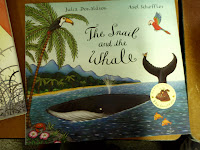
International children's magazine market: What material they need, how to submit work, how children's magazine copyright and payment works - a talk by international editor Christine Clark
Christine began her talk by describing her experience as a child reader of magazines. She discussed a magaznine's predicability in terms of arrival and features as well as the surprizes offered by each edition. A magazine informs, entertains and inspires. Subscription to a magazine gives a child a sense of ownership as she receives an item in the mail addressed to her. Magazines are also good for reluctant readers because they break information into manageable chunks.
Surveys of magazine reading by children show that large percentages read magazines often.
Christine showed slides of a wide range of children's magazines which are available in the US, such as:
Dig, Hopschotch for Girls, Cricket, American Girl, Ranger Rick, Sports Illustrated for Kids, Rocket, Chirp, National Geographic for Kids, New Moon, Ladybug, Faces, Your big backyard, Iguana, Cobblestone, Muse, Zootles, Calliope,
National Geographic for Little Kids and Owl.
Christine described how people write for Highlights magazine. She suggested that anyone aspiring to write for a children's magazine should:
Study the magazine
Get the writers' guidelines
Carry out an extensive analysis of the
content, brand and identity of the magazine.

Find out what the ideals of the magazine are / what is its mission statement?
Highlights magazine was founded in 1946 by two teachers who wanted to develop tolerance among kids without being too heavy-handed. It is a general interest magazine. 85% of the magazine is written by free lancers. Every issue has certain features such as a non-fiction article about another part of the world. Its indirect message is that "we are more alike than we are different".
The word length of articles is approximately 800 words. However, if an article targets a younger group, then a slighly larger font is used and the article comprises fewer words.
Christine acknowledged the
Highlights Foundation which had enabled her visit to South Africa. Its purpose is to raise the standard of children's literature.


 o make a particular point, it should be small and should be sent as something that does not need to be returned.
o make a particular point, it should be small and should be sent as something that does not need to be returned. 

 with. Although Macmillan says it doesn't accept unsolicited manuscripts, she said that the post often brought surprizes that the staff couldn't resist looking at. In this way some of their well known authors had first been published.
with. Although Macmillan says it doesn't accept unsolicited manuscripts, she said that the post often brought surprizes that the staff couldn't resist looking at. In this way some of their well known authors had first been published.

 International children's magazine market: What material they need, how to submit work, how children's magazine copyright and payment works - a talk by international editor Christine Clark
International children's magazine market: What material they need, how to submit work, how children's magazine copyright and payment works - a talk by international editor Christine Clark





